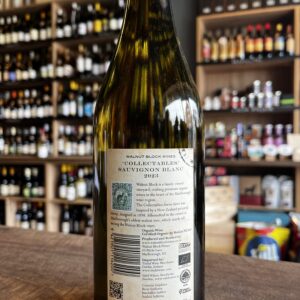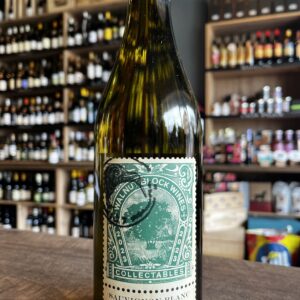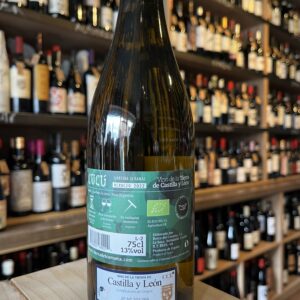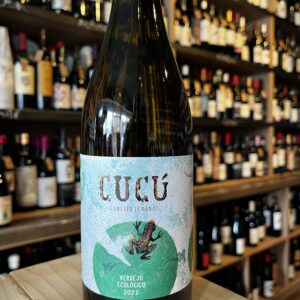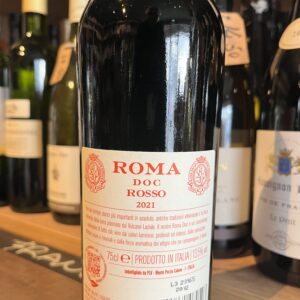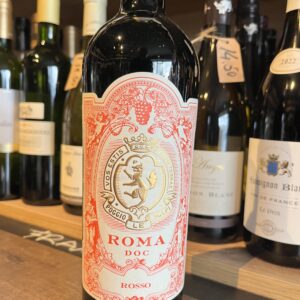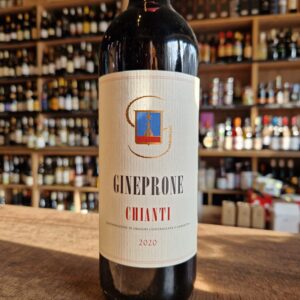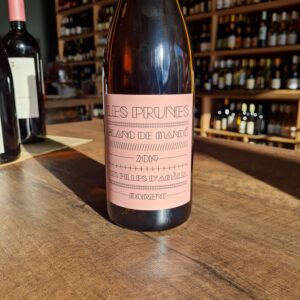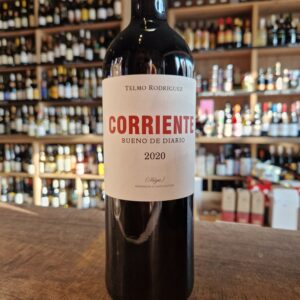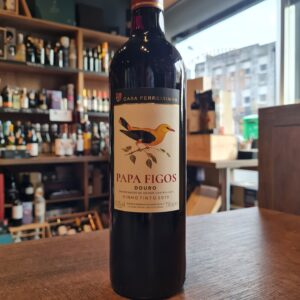-
Out of stock
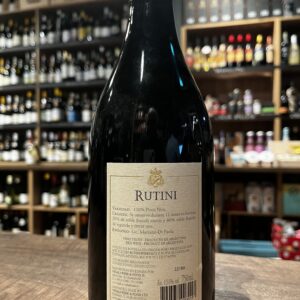
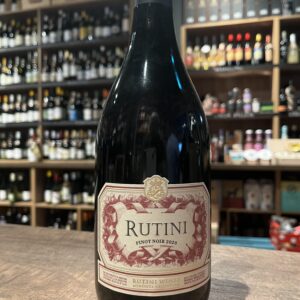 From the start, Felipe Rutini was guided by the motto “Labor and perseverance.” This attitude shaped the development of his wines, which became synonymous with superlative quality. Following his innovative spirit, in 1925 the winery began to plant vines in the Uco Valley. Uco Valley vineyards comprise over 400 hectares at an altitude of between 1,050 and 1,200 meters above sea level. An additional 120 hectares of fields that are currently being planted with vines will expand the winery’s possibilities for producing unique wines that are carefully tended to and nurtured from the very beginning. Very promising wines that need that leap of faith due to price. I suppose Mariano Di Paola being within the best 30 best winemakers in the world may have something to do with it... We do recomend it, just not everyday!
From the start, Felipe Rutini was guided by the motto “Labor and perseverance.” This attitude shaped the development of his wines, which became synonymous with superlative quality. Following his innovative spirit, in 1925 the winery began to plant vines in the Uco Valley. Uco Valley vineyards comprise over 400 hectares at an altitude of between 1,050 and 1,200 meters above sea level. An additional 120 hectares of fields that are currently being planted with vines will expand the winery’s possibilities for producing unique wines that are carefully tended to and nurtured from the very beginning. Very promising wines that need that leap of faith due to price. I suppose Mariano Di Paola being within the best 30 best winemakers in the world may have something to do with it... We do recomend it, just not everyday! -
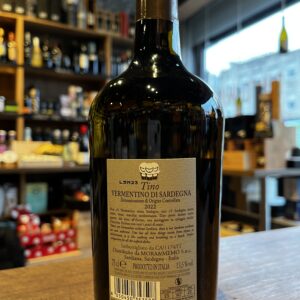
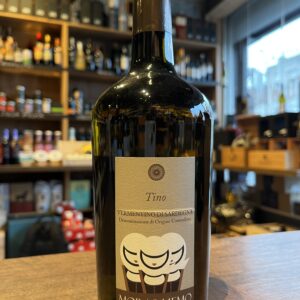 Their Vineyard is located in the south eastern corner of Sardinia in a rolling hill area looking at the sea of the Gulf of Cagliari. Vines with an average age of forty years our vineyards are able to express the best from the terroir of the south Sardinia. A unique terroir with the Sette Fratelli mountains, the tallest ones of the south of the island, just a mile away from the winery, behind them the beatiful beaches overlooking the Thyreenian sea. Pair with seafood in general, fish and delicate meat served with light sauces, soups or pasta.
Their Vineyard is located in the south eastern corner of Sardinia in a rolling hill area looking at the sea of the Gulf of Cagliari. Vines with an average age of forty years our vineyards are able to express the best from the terroir of the south Sardinia. A unique terroir with the Sette Fratelli mountains, the tallest ones of the south of the island, just a mile away from the winery, behind them the beatiful beaches overlooking the Thyreenian sea. Pair with seafood in general, fish and delicate meat served with light sauces, soups or pasta. -
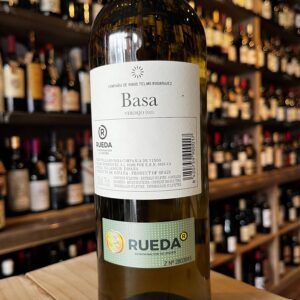
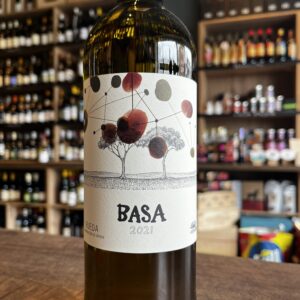 Telmo Rodriguez of Basque origin, studied wine at the Institute of Oenology in Bordeaux, before doing internships with Cos d’Estournel, Jean Louis Chave and Trevallon . He also worked in the vinification of wines from the family estate of Remelluri, in Rioja. Then, in 1990, with an investment of just a few thousand euros, he launched his own winery. He buys grapes to produce his first wines. His first plots of property did not arrive until 1997, in Rioja. Paradoxical for someone who was dying to explore new regions. One of the main principles of Telmo Rodriguez is that of respecting the Spanish tradition of cultivating the vine in goblet, because this method of managing the vine protects it from the great heat of Iberian vineyards. He is fiercely opposed to the fashion of trellising vineyards and only buys vines that respect his ideal. Telmo also works in biodynamics but, showing great common sense, he admits that he only does it for the respect of the land and that the mention of organic viticulture has no importance in his eyes. The important thing is that the result is a balanced and tasty wine. The name comes from the 40-year-old 'baso' or bush-trained vines that are planted on limestone-rich soils at over 700-meters elevation on a plateau along the Duero River. Soils are made of gravel from fluvial terraces, erosion slopes and glacis. Pairs great with comfort food, Tapas and Tortillas of all sorts
Telmo Rodriguez of Basque origin, studied wine at the Institute of Oenology in Bordeaux, before doing internships with Cos d’Estournel, Jean Louis Chave and Trevallon . He also worked in the vinification of wines from the family estate of Remelluri, in Rioja. Then, in 1990, with an investment of just a few thousand euros, he launched his own winery. He buys grapes to produce his first wines. His first plots of property did not arrive until 1997, in Rioja. Paradoxical for someone who was dying to explore new regions. One of the main principles of Telmo Rodriguez is that of respecting the Spanish tradition of cultivating the vine in goblet, because this method of managing the vine protects it from the great heat of Iberian vineyards. He is fiercely opposed to the fashion of trellising vineyards and only buys vines that respect his ideal. Telmo also works in biodynamics but, showing great common sense, he admits that he only does it for the respect of the land and that the mention of organic viticulture has no importance in his eyes. The important thing is that the result is a balanced and tasty wine. The name comes from the 40-year-old 'baso' or bush-trained vines that are planted on limestone-rich soils at over 700-meters elevation on a plateau along the Duero River. Soils are made of gravel from fluvial terraces, erosion slopes and glacis. Pairs great with comfort food, Tapas and Tortillas of all sorts -
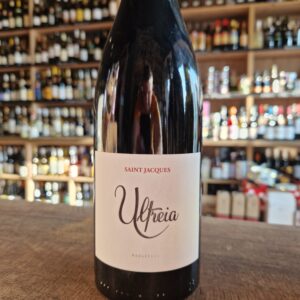 This winery is a personal project of the renowned oenologist from León, Raúl Pérez. Since he worked in the winery Castro Ventosa, which caused a true revolution in El Bierzo, Raúl Pérez has not stopped. He is undoubtedly one of the most admired winemakers in Spain, the master of wines with an Atlantic character. Pérez is the magician of Mencía, he knows the variety better than anyone and works his vineyards with total respect for nature. His wines are a lesson in elegance and their simplicity also proves that high quality doesn’t necessarily mean exorbitant prices. Pleasant, elegant and authentic wines that are definitely worth much more than they cost, such as Ultreia Saint Jacques, an astonishing Mencía red wine that offers so much for so little. In addition, its fresh personality makes it an ideal wine to be enjoyed even on summer days
This winery is a personal project of the renowned oenologist from León, Raúl Pérez. Since he worked in the winery Castro Ventosa, which caused a true revolution in El Bierzo, Raúl Pérez has not stopped. He is undoubtedly one of the most admired winemakers in Spain, the master of wines with an Atlantic character. Pérez is the magician of Mencía, he knows the variety better than anyone and works his vineyards with total respect for nature. His wines are a lesson in elegance and their simplicity also proves that high quality doesn’t necessarily mean exorbitant prices. Pleasant, elegant and authentic wines that are definitely worth much more than they cost, such as Ultreia Saint Jacques, an astonishing Mencía red wine that offers so much for so little. In addition, its fresh personality makes it an ideal wine to be enjoyed even on summer days -
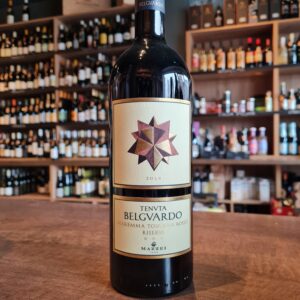 Made with Cabernet Sauvignon and a small percentage of Cabernet Franc grapes, this powerful and at the same time elegant wine is the most important "Cru" of the Estate, a pure expression of the Maremma "terroir". Technical sheet
Made with Cabernet Sauvignon and a small percentage of Cabernet Franc grapes, this powerful and at the same time elegant wine is the most important "Cru" of the Estate, a pure expression of the Maremma "terroir". Technical sheet -
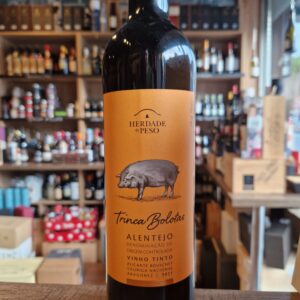 Moving freely through the cork oak forests of the Alentejo, where it feeds on acorns among other things, the Alentejo pig, a species indigenous to Portugal, is Europe's only surviving pastoral pig. Due to the way in which it forms part of the landscape and preserves the region's Mediterranean forest, it is part of Alentejo's heritage. Named after this reputable pig, this wine combines two of Alentejo's biggest symbols. All the grapes used in this wine were produced in accordance with the Sustainable Agriculture Integrated Production guidelines as defined by the International Organisation for Biological and Integrated Control (OILB/IOBC): www.iobc-wprs.org. The rigorous compliance with these practices is certified by an independent organisation, recognized by the Portuguese State. With its smooth tannins and enormous balance, this wine pairs wonderfully with light dishes, such as poultry and pasta, as well as with sausages, ham and more sophisticated meat dishes.
Moving freely through the cork oak forests of the Alentejo, where it feeds on acorns among other things, the Alentejo pig, a species indigenous to Portugal, is Europe's only surviving pastoral pig. Due to the way in which it forms part of the landscape and preserves the region's Mediterranean forest, it is part of Alentejo's heritage. Named after this reputable pig, this wine combines two of Alentejo's biggest symbols. All the grapes used in this wine were produced in accordance with the Sustainable Agriculture Integrated Production guidelines as defined by the International Organisation for Biological and Integrated Control (OILB/IOBC): www.iobc-wprs.org. The rigorous compliance with these practices is certified by an independent organisation, recognized by the Portuguese State. With its smooth tannins and enormous balance, this wine pairs wonderfully with light dishes, such as poultry and pasta, as well as with sausages, ham and more sophisticated meat dishes. -
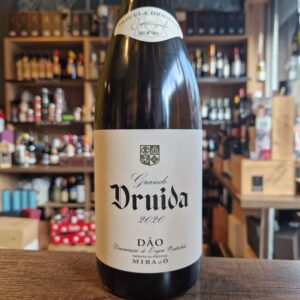 Nuno Mira do Ó is a one-man viticulture and enology powerhouse. A deep-thinking, well-traveled, generous person totally focused on expressing the great terroir of his native country. His peers look his way for guidance because his experience bringing forth wines of place covers almost every major wine region in Portugal. He launched his eponymous brand in the Dão wine region with Druida Encruzado. The wine is named for the ancient Celtic druids whose connection to the earth and plants drove their quest to achieve spiritual equilibrium through the balance of nature. As an enologist and viticulturist, Nuno is in constant search for balance between the soil, the climate, and the vines. Mira do Ó wines seek to attain perfect sensory balance with the utmost respect for nature. This is a pursuit driven by passion and a desire to share wines filled with freshness, elegance, and aging potential. These wines are handcrafted in the Dão from indigenous varietals with vineyards in granite soil sitting above 500 meters of elevation to capture the region’s cool climate. Store the bottles lying down in a cool place (15-17ºC). Drink at 11-12º C and pair with fine food.
Nuno Mira do Ó is a one-man viticulture and enology powerhouse. A deep-thinking, well-traveled, generous person totally focused on expressing the great terroir of his native country. His peers look his way for guidance because his experience bringing forth wines of place covers almost every major wine region in Portugal. He launched his eponymous brand in the Dão wine region with Druida Encruzado. The wine is named for the ancient Celtic druids whose connection to the earth and plants drove their quest to achieve spiritual equilibrium through the balance of nature. As an enologist and viticulturist, Nuno is in constant search for balance between the soil, the climate, and the vines. Mira do Ó wines seek to attain perfect sensory balance with the utmost respect for nature. This is a pursuit driven by passion and a desire to share wines filled with freshness, elegance, and aging potential. These wines are handcrafted in the Dão from indigenous varietals with vineyards in granite soil sitting above 500 meters of elevation to capture the region’s cool climate. Store the bottles lying down in a cool place (15-17ºC). Drink at 11-12º C and pair with fine food. -
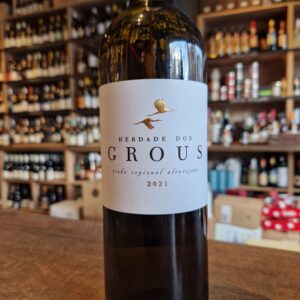 Created from scratch in the Alentejo landscape, you will find Herdade dos Grous. In Albernoa, 17 km from Beja, Herdade dos Grous brings together the production of wine, livestock, rural tourism and wine tourism. Alentejo, Portugal’s largest province holds the traditional Portuguese charm and a Moorish heritage, which can be seen in all its architecture. Its Continental climate with Mediterranean influences, offers ideal conditions for the production of fantastic wines and extremely high quality regional products. The establishment of the estate and the cultivation of the vines (1987), as well as the design of a state-of-the-art wine cellar (built in 2005) are all based on the latest findings in high-end viticulture. ’Herdade dos Grous’ represents the current pioneering spirit of Portugal’s wine-growing business like no other estate. We recommend serving this wine with seafood, poultry or pasta carbonara. Ideal serving temperature is 10 to 12°C
Created from scratch in the Alentejo landscape, you will find Herdade dos Grous. In Albernoa, 17 km from Beja, Herdade dos Grous brings together the production of wine, livestock, rural tourism and wine tourism. Alentejo, Portugal’s largest province holds the traditional Portuguese charm and a Moorish heritage, which can be seen in all its architecture. Its Continental climate with Mediterranean influences, offers ideal conditions for the production of fantastic wines and extremely high quality regional products. The establishment of the estate and the cultivation of the vines (1987), as well as the design of a state-of-the-art wine cellar (built in 2005) are all based on the latest findings in high-end viticulture. ’Herdade dos Grous’ represents the current pioneering spirit of Portugal’s wine-growing business like no other estate. We recommend serving this wine with seafood, poultry or pasta carbonara. Ideal serving temperature is 10 to 12°C -
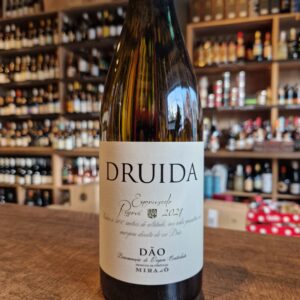 Mira do O produces expressive, concentrated wines. Despite the concentration, all the wines are fresh, elegant, well-balanced and shows great maturation potential. Dao region is valued by wine lovers for its expressiveness, freshness, concentration of taste and longevity of the wine. The region is a little further away from the Atlantic Ocean, but its cold winds still cool Dao vineyards. For this reason, the wine is high levels of acidity and great balance. The poor granite soil prevalent in the region gives the wines more texture, depth and spice. It is worth mentioning that here is a register and a large part of the old, local Portuguese grapes. Mira do O Druida Encruzado Reserva is made from a small vineyard located on a 500-meter plateau. This plateau provides protection from excess Atlantic moisture. At the same time, the temperature fluctuations caused by this altitude allow the grapes to ripen perfectly during the day, but they are more refreshing due to the cooling vineyards. The winemaker follows the principle of minimalist intervention: to change the wine as little as possible during its production. For this reason, the very characteristics of the grape stand out. Pair it with aperitif, roast white meats, sautee greens
Mira do O produces expressive, concentrated wines. Despite the concentration, all the wines are fresh, elegant, well-balanced and shows great maturation potential. Dao region is valued by wine lovers for its expressiveness, freshness, concentration of taste and longevity of the wine. The region is a little further away from the Atlantic Ocean, but its cold winds still cool Dao vineyards. For this reason, the wine is high levels of acidity and great balance. The poor granite soil prevalent in the region gives the wines more texture, depth and spice. It is worth mentioning that here is a register and a large part of the old, local Portuguese grapes. Mira do O Druida Encruzado Reserva is made from a small vineyard located on a 500-meter plateau. This plateau provides protection from excess Atlantic moisture. At the same time, the temperature fluctuations caused by this altitude allow the grapes to ripen perfectly during the day, but they are more refreshing due to the cooling vineyards. The winemaker follows the principle of minimalist intervention: to change the wine as little as possible during its production. For this reason, the very characteristics of the grape stand out. Pair it with aperitif, roast white meats, sautee greens -
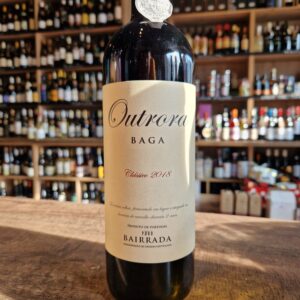 This Bairrada Classic wine is a tribute to the centenary vineyards, matriarchs of the region and witnesses of past times. The grapes are selected from 80 to 120 year old vines from our vineyard in the Cadoiços Valley. Winemaking in “lagar” with foot treading, besides being an old technique, we believe it remains the best way to obtain great wines of this variety. The two-year oak stage and subsequent bottle rest give the elegance and balance needed for a wine to be tasted for many years. An Impressive Bairrada!An Impressive Wine! Goes well with buttered Goat and Sheep Cheeses, traditional sausages (raw, boiled, or roasted), red meats
This Bairrada Classic wine is a tribute to the centenary vineyards, matriarchs of the region and witnesses of past times. The grapes are selected from 80 to 120 year old vines from our vineyard in the Cadoiços Valley. Winemaking in “lagar” with foot treading, besides being an old technique, we believe it remains the best way to obtain great wines of this variety. The two-year oak stage and subsequent bottle rest give the elegance and balance needed for a wine to be tasted for many years. An Impressive Bairrada!An Impressive Wine! Goes well with buttered Goat and Sheep Cheeses, traditional sausages (raw, boiled, or roasted), red meats -
 Menina d’Uva is a small winery located in Uva, a remote village in the quiet and desolate countryside of the Northeast of Portugal. Female winemaker Aline Domingues moved from Paris to this area from which her parents had emigrated to Paris to give their children better opportunities. A controversial move within the family but one that I wholeheartedly support. Aline clearly is a talented winemaker crafting beautifully pure wines. Made from 70% red grapes (including Bastardo, known in the Jura as Trousseau) and 30% white grapes including Malvasia and white Bastardo. It’s still a hearthy red that’s crispy and refreshing; cherries, pomegranate with a beautiful smell of the forest. Highly recommended.
Menina d’Uva is a small winery located in Uva, a remote village in the quiet and desolate countryside of the Northeast of Portugal. Female winemaker Aline Domingues moved from Paris to this area from which her parents had emigrated to Paris to give their children better opportunities. A controversial move within the family but one that I wholeheartedly support. Aline clearly is a talented winemaker crafting beautifully pure wines. Made from 70% red grapes (including Bastardo, known in the Jura as Trousseau) and 30% white grapes including Malvasia and white Bastardo. It’s still a hearthy red that’s crispy and refreshing; cherries, pomegranate with a beautiful smell of the forest. Highly recommended. -
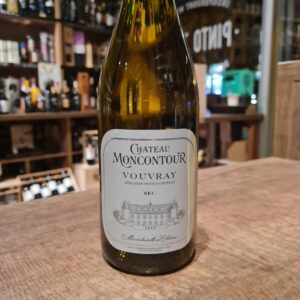 Since 1994, the Montcountour vineyards are owned and controlled by the Feray family. These wines are currently produced from six high-quality wine estates located across the Loire Valley. The vines that were grown on the steep slopes of the valley were covered with hard rocks and caves to protect the history and maintain the mystery of these impeccable vines. These terroirs are known for their exceptional climatic conditions and diverse soils. The Feudal building has survived the centuries and has seen many personalities from the court and the arts stay there, a dependency of the Bishopric of tours under Saint-Martin in the 4th century. The current building dates from the renaissance and was erected by King Charles VII who offered it to Agnès Sorel, his lady of Beauty. Partly burnt down during the French Revolution, the building was rehabilitated; then, in 1846, the Touraine writer Honoré de Balzac wanted to buy it, wanted it in vain, to live there with his fervent admirer and wife Evelyne Hanska. On June 10, 1846, he wrote to his wife and one could read in this letter the still famous formula: "Moncontour is my predilection".
Since 1994, the Montcountour vineyards are owned and controlled by the Feray family. These wines are currently produced from six high-quality wine estates located across the Loire Valley. The vines that were grown on the steep slopes of the valley were covered with hard rocks and caves to protect the history and maintain the mystery of these impeccable vines. These terroirs are known for their exceptional climatic conditions and diverse soils. The Feudal building has survived the centuries and has seen many personalities from the court and the arts stay there, a dependency of the Bishopric of tours under Saint-Martin in the 4th century. The current building dates from the renaissance and was erected by King Charles VII who offered it to Agnès Sorel, his lady of Beauty. Partly burnt down during the French Revolution, the building was rehabilitated; then, in 1846, the Touraine writer Honoré de Balzac wanted to buy it, wanted it in vain, to live there with his fervent admirer and wife Evelyne Hanska. On June 10, 1846, he wrote to his wife and one could read in this letter the still famous formula: "Moncontour is my predilection". -
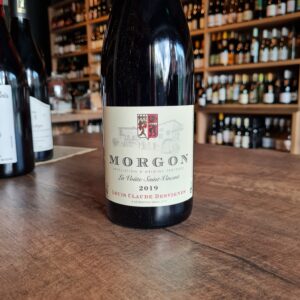 Louis-Claude Desvignes is a family estate that dates back to 1700. The Desvignes range is "La Voûte Saint Vincent", named for the vault or "voûte" of the old family house and for the patron saint of winemakers. It was Louis-Claude who began to turn the estate’s grapes into wine, and now with the reins handed over to his two sons Louis-Benoît and Claude-Emmanuelle Desvignes. It is a blend of certified-organic estate parcels totalling 4.5 hectares in the climat of Douby, which lies in the northeast corner of Morgon along the border of Fleurie. The La Voûte vines average 50 years old and are planted in Douby's typical sandy, decomposed-granite soils. Viticulture and vinification are consistent across all Desvignes wines. In the case of La Voûte, the parcels are all vinified separately.
Louis-Claude Desvignes is a family estate that dates back to 1700. The Desvignes range is "La Voûte Saint Vincent", named for the vault or "voûte" of the old family house and for the patron saint of winemakers. It was Louis-Claude who began to turn the estate’s grapes into wine, and now with the reins handed over to his two sons Louis-Benoît and Claude-Emmanuelle Desvignes. It is a blend of certified-organic estate parcels totalling 4.5 hectares in the climat of Douby, which lies in the northeast corner of Morgon along the border of Fleurie. The La Voûte vines average 50 years old and are planted in Douby's typical sandy, decomposed-granite soils. Viticulture and vinification are consistent across all Desvignes wines. In the case of La Voûte, the parcels are all vinified separately. -
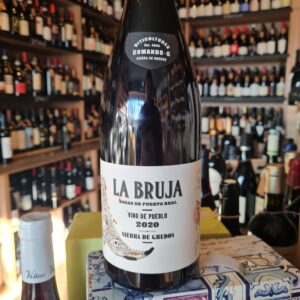 Daniel Landi and Fernando García have been friends since college. Successful winemakers in their own right – Dani at his family’s estate, Bodegas Jimenez-Landi and Fer at Bodega Marañones - in 2008 they started a winemaking project together: Comando G. Along with the pioneers of Priorat, Dani and Fer are redefining Garnacha, previously viewed as a workhorse variety, into something that can rival the elegance and finesse of Burgundian Pinot Noir or Syrah in the northern Rhône. The duo work with several small, isolated plots perched high up in the mountainous Sierra de Gredos to create truly unique, terroir-expressive wines. The vineyards that Daniel and Fernando have assembled are all farmed biodynamically, with vines ranging in age from 50 to 80 years old. According to Wine Advocate writer Luis Gutierrez, "they improve their vineyards from the moment they buy or rent them [...] The quality of their wines is what they strive to improve the most, and the results are there.” In the winery their winemaking is considered and precise, gently coaxing out the delicate balance of fruit character and terroir from each site. It is this commitment to a sense of place, nuance, and finesse that make their wines among the most compelling in Spain.
Daniel Landi and Fernando García have been friends since college. Successful winemakers in their own right – Dani at his family’s estate, Bodegas Jimenez-Landi and Fer at Bodega Marañones - in 2008 they started a winemaking project together: Comando G. Along with the pioneers of Priorat, Dani and Fer are redefining Garnacha, previously viewed as a workhorse variety, into something that can rival the elegance and finesse of Burgundian Pinot Noir or Syrah in the northern Rhône. The duo work with several small, isolated plots perched high up in the mountainous Sierra de Gredos to create truly unique, terroir-expressive wines. The vineyards that Daniel and Fernando have assembled are all farmed biodynamically, with vines ranging in age from 50 to 80 years old. According to Wine Advocate writer Luis Gutierrez, "they improve their vineyards from the moment they buy or rent them [...] The quality of their wines is what they strive to improve the most, and the results are there.” In the winery their winemaking is considered and precise, gently coaxing out the delicate balance of fruit character and terroir from each site. It is this commitment to a sense of place, nuance, and finesse that make their wines among the most compelling in Spain. -
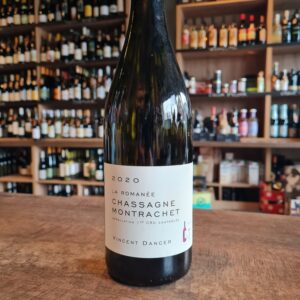 Vincent Dancer grew up in Alsace, where he inherited a love of wine and photography from his father. After studying engineering, his father suggested that Vincent spend some time in Burgundy, where his family owned some vines that were being rented out to cousins. Dancer was immediately hooked, and decided to settle in Chassagne-Montrachet and make wine from the five hectares of well-situated vineyards. The winery is small even by the standards of Burgundy, and despite Dancer’s reclusive nature, the wines are well known to a small circle of restaurateurs and wine-lovers who reliably take their miniscule allocation year after year. Dancer was the first producer in Chassagne to become certified organic, and there remains less than a handful of others. He is quietly individualistic, creating his own lean, bright, and savory style of wines, trusting his instincts and experience to make the best possible wine in his own way. Each cuvée, however, is truly a reflection of the terroir—from the rich, unctuous Meursault Perrières to the incisively fresh Chassagne Tête du Clos. It is not an exaggeration to say that the wines from Vincent Dancer are majestically unique, exceptionally delicious, and well worth the effort of seeking out.
Vincent Dancer grew up in Alsace, where he inherited a love of wine and photography from his father. After studying engineering, his father suggested that Vincent spend some time in Burgundy, where his family owned some vines that were being rented out to cousins. Dancer was immediately hooked, and decided to settle in Chassagne-Montrachet and make wine from the five hectares of well-situated vineyards. The winery is small even by the standards of Burgundy, and despite Dancer’s reclusive nature, the wines are well known to a small circle of restaurateurs and wine-lovers who reliably take their miniscule allocation year after year. Dancer was the first producer in Chassagne to become certified organic, and there remains less than a handful of others. He is quietly individualistic, creating his own lean, bright, and savory style of wines, trusting his instincts and experience to make the best possible wine in his own way. Each cuvée, however, is truly a reflection of the terroir—from the rich, unctuous Meursault Perrières to the incisively fresh Chassagne Tête du Clos. It is not an exaggeration to say that the wines from Vincent Dancer are majestically unique, exceptionally delicious, and well worth the effort of seeking out. -
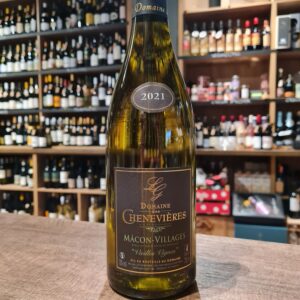 The Domaine des Chenevières has been in operation for 6 generations of winegrowers who love their land. The family farm is now managed by Sylvain, Benoît and Aurélien LENOIR, three cousins who succeeded their parents and took over the torch. The Domaine des Chenevières is located in the town of Saint-Maurice-de-Satonnay (71 Saône-et-Loire, Burgundy), a small village located halfway between Mâcon and Cluny. The vineyard with 46 hectares of vines is located in 3 municipalities: Saint-Maurice-de-Satonnay, Péronne and Azé, also renowned for its prehistoric caves. From pruning to harvesting, from vinification to bottling, everything is done with respect for tradition in order to bring you the enchantment of the aromas that will awaken your taste buds when tasting the white wines or the red wines from the production of the Domaine des Chenevières. The estate's vines are planted on hillsides and mid-hillsides, on clay-limestone soil. They are exposed South / South-East. The vines of the estate are between 20 and 60 years old and sustainable farming is part of every thought process. Thus, part of the vines remains grassed to promote biodiversity with an emphasis on tillage. They have a certification of HVE or High Environmental Value in all of their 46 hectares. Pair it with hors d'ouvres, grilled fish, shellfish, oysters, quiches, gratins. Great value Mâcon-Villages. Enjoy!
The Domaine des Chenevières has been in operation for 6 generations of winegrowers who love their land. The family farm is now managed by Sylvain, Benoît and Aurélien LENOIR, three cousins who succeeded their parents and took over the torch. The Domaine des Chenevières is located in the town of Saint-Maurice-de-Satonnay (71 Saône-et-Loire, Burgundy), a small village located halfway between Mâcon and Cluny. The vineyard with 46 hectares of vines is located in 3 municipalities: Saint-Maurice-de-Satonnay, Péronne and Azé, also renowned for its prehistoric caves. From pruning to harvesting, from vinification to bottling, everything is done with respect for tradition in order to bring you the enchantment of the aromas that will awaken your taste buds when tasting the white wines or the red wines from the production of the Domaine des Chenevières. The estate's vines are planted on hillsides and mid-hillsides, on clay-limestone soil. They are exposed South / South-East. The vines of the estate are between 20 and 60 years old and sustainable farming is part of every thought process. Thus, part of the vines remains grassed to promote biodiversity with an emphasis on tillage. They have a certification of HVE or High Environmental Value in all of their 46 hectares. Pair it with hors d'ouvres, grilled fish, shellfish, oysters, quiches, gratins. Great value Mâcon-Villages. Enjoy! -
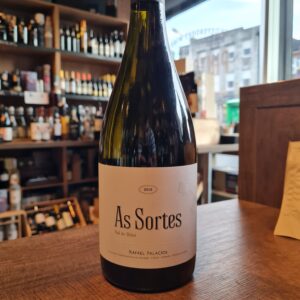 Rafael Palacios is the son of D. José Palacios Remondo (founder of Bodegas Palacios Remondo) and the brother of Alvaro Palacios(Priorat) but ultimately a passionate producer of white wine. After producing his first white at the family-run winery, called Plácet, he decided to set up his own winery in Galicia, in the Valle del Bibei, under the Valdeorras denomination. Established in 2004, Rafael Palacios has rapidly become one of Spain’s greatest producers of white wine. His focus is on the local variety Godello, grown in a small estate on very old vines that are up to 90 years old from the areas steep-sided, terraced vineyards and have been cultivated with respect of the land, without using any type of herbicide or pesticide. Rafael Palacios is refining his work year after year, reaching the magic of the greatest wines. A top wine, and one to keep. Grub pairing suggestions are mild Asian dishes, Moroccan specialities, fish ragout with saffron sauce Risotto ai frutti di mar
Rafael Palacios is the son of D. José Palacios Remondo (founder of Bodegas Palacios Remondo) and the brother of Alvaro Palacios(Priorat) but ultimately a passionate producer of white wine. After producing his first white at the family-run winery, called Plácet, he decided to set up his own winery in Galicia, in the Valle del Bibei, under the Valdeorras denomination. Established in 2004, Rafael Palacios has rapidly become one of Spain’s greatest producers of white wine. His focus is on the local variety Godello, grown in a small estate on very old vines that are up to 90 years old from the areas steep-sided, terraced vineyards and have been cultivated with respect of the land, without using any type of herbicide or pesticide. Rafael Palacios is refining his work year after year, reaching the magic of the greatest wines. A top wine, and one to keep. Grub pairing suggestions are mild Asian dishes, Moroccan specialities, fish ragout with saffron sauce Risotto ai frutti di mar


